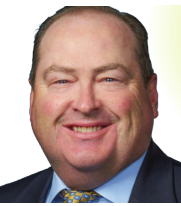While there’s still turbulence, the numbers are trending in the right direction
This year has been a volatile one for the economy and the financial markets. The main catalyst of uncertainty has been the persistent and pervasive nature of inflation. In response, the Federal Reserve Bank has embarked on an aggressive monetary policy change that has quickly and significantly increased interest rates. The question remains, has inflation been mitigated by this change of policy?
The good news is it appears that inflation may have peaked. The bad news is it remains unacceptably high. While the consumer price index (CPI) peaked in June at a year-over-year rate of 9 percent, it has declined every month since and currently is 7.8 percent. The bigger question is whether the recent decline in inflation will continue to trend lower towards the Federal Reserve’s 2 percent target.
There have been three primary drivers of inflation: supply chain disruptions, labor issues and commodity prices. While some of these drivers have improved, others still are a significant concern.
Supply chain disruptions have improved. At the outset of the Covid pandemic, a dramatic shift in consumer demand severely affected the supply chain. In “normal” circumstances, the U.S. economy is driven by the service sector: restaurants, resorts, leisure and travel. With the Covid lockdown, consumer demand shifted significantly to “goods.” This dramatically increased demand for commodities and finished goods. The supply chain buckled under this change.
However, there are only so many microwave ovens one can purchase. Demand is now shifting back to “normal,” meaning the consumer has returned to buying services instead of goods. Inflation on goods has subsided. That has allowed most commodity prices to decline, which is good news.
The bad news is that demand for services has spiked. Just ask anyone who has bought an airline ticket or went on a vacation. Prices for travel have skyrocketed. Disney recently announced an increase in theme park prices. Pepsi had terrific earnings as the company has been able to pass input prices on to the consumer. Early indications are that the holiday shopping season is off to a great start. Inflation for “services” is still hot.
The labor market remains tight. On a recent trip to our regional headquarters in Manchester, I couldn’t help but notice the ubiquitous “Help Wanted” signs. Real estate developers I spoke with expressed concern that skilled labor is still difficult to find. The National Federation of Independent Business (NFIB) Jobs Report states that 90 percent of small businesses report few or no qualified applicants for open positions.
In addition, there will be significant labor union negotiations in late 2022 and 2023. In the wake of widely publicized labor troubles in the rail industry, the airlines and their pilot unions are in contentious discussions. The UAW will be entering negotiations with the Big 3 auto companies, as will the Teamsters and UPS. Lastly, legal immigration is a substantial contributor to the growth of our labor force. Unfortunately, our legal immigration is broken. With a split government in Washington, I doubt it will be fixed anytime soon.
In summary, labor cost is a sizable portion of services inflation. I doubt there will be much improvement on the labor front anytime soon, and this will cause inflation to remain higher than many have hope.
Lastly, while commodity prices have declined from their peak, they still are elevated. Actions such as distributions from the Strategic Petroleum Reserve and the suspension of state and local gasoline taxes have helped. The economic lockdown in China has diminished demand for commodities. These factors have contributed to a significant decline in prices.
The good news is there is a case that inflation has peaked. Most significant is the Federal Reserve Bank’s aggressive increase in interest rates. The roll-off of substantial fiscal stimulus from Covidrelated spending will help, too. Lastly, the decline in goods and commodity prices is trending in the right direction. The bad news is these numbers remain elevated and far above the Federal Reserve Bank’s stated target of 2 percent. Nonetheless, at least for the moment, it appears inflation may have peaked.
Kenneth J. Entenmann is chief investment officer and chief economist at NBT Wealth Management. This article contains insights based on information available as of Nov. 30.